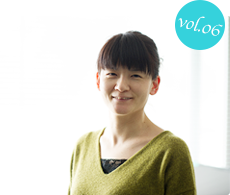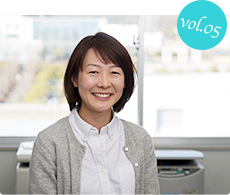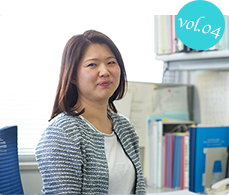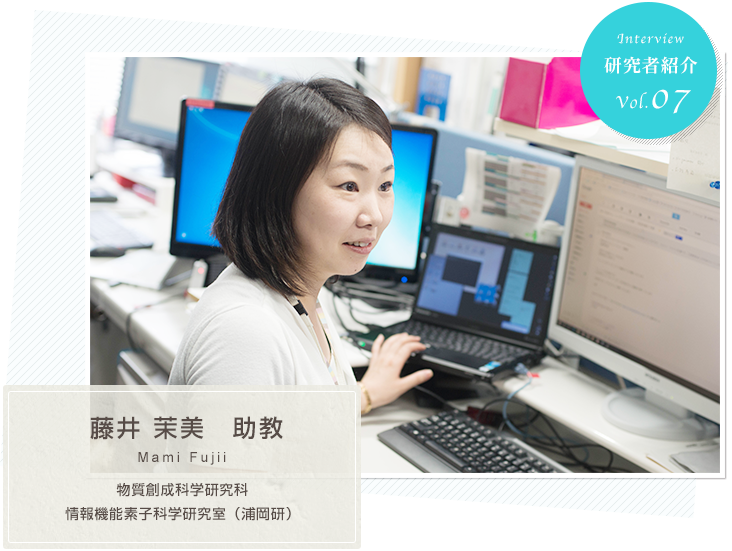
![]()
Graduated from the Graduate School of Materials Science, Nara Institute of Science and Technology (NAIST) in 2012. Ph.D. in engineering. Specialized in semiconductor physics. Mainly involved in research on thin-film transistors using oxide semiconductors.On maternity leave from November 2016 to April 2017.
Why did you become a researcher?
I have experience working for a company. When I was a fifth-year student at a technical college, I was supposed to work on my thesis research after receiving an offer from a company, so I went looking for a job without knowing how interesting research could be. However, during my thesis research, I was fascinated by the idea of creating something new on my own and decided that I wanted to be a researcher in the future.
Also, during the summer of my fifth year at the College of Technology, my lab gave me two weeks off to go to New Zealand for a home stay. During this time, I interacted with students from different countries who were studying with different goals in mind, which made me want to study more at university. During this time, I experienced the difficulty of creating something new, the joy of accomplishing something despite setbacks, and the happiness of learning something new, which I believe are valuable assets for me. So, after joining the company, I talked to my supervisor about my desire to become a researcher, and while working as an engineer in product development, I studied for the entrance examination and re-entered university. I was blessed with a good supervisor and the support of my seniors around me, and I knew that I could not give up halfway.
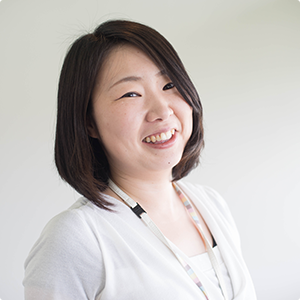
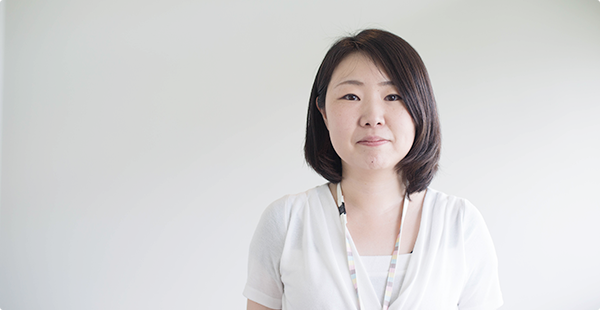
Balancing housework and childcare with career advancement
I gave birth for the first time last year and have a 0-year-old daughter. It's a lot to get used to, and every day is a trial-and-error process of balancing childcare and work. Fortunately, however, I have many people around me, including my boss, who understand and support me, and who make sure I don't have any seminars or meetings after 5 p.m. This atmosphere seems to trickle down to the students, and I am grateful for the support of those around me, as I rarely have to be late for errands. My husband is also a faculty member at the same university, so we are able to raise our children together, which is very helpful.
I get up around 6:00 a.m. to take care of my daughter and do household chores such as preparing breakfast and doing laundry; my husband drops her off at daycare around 7:30 a.m., so I get ready and go to work before 8:00 a.m. At noon, I go back to the staff dormitory, which is a five-minute walk away, cook lunch, eat it with my husband, and return to the lab. In the evening, I pick up my daughter at 6:00 and cook dinner while my husband bathes her. My daughter is a very good girl and goes to bed early after dinner, so I then do the housework and as much work as I can at home. Sometimes we are called out at unexpected times for equipment alarms, etc., but thanks to our dormitory we can go immediately to respond, so there is no great inconvenience in going home early.
Since I gave birth exactly halfway through my term, I was lucky enough to get six months of maternity leave, which allowed me to easily secure a daycare center, and I will now have time to build on my accomplishments during my term. I will work as hard as I can to increase my value and create something that only I can do.
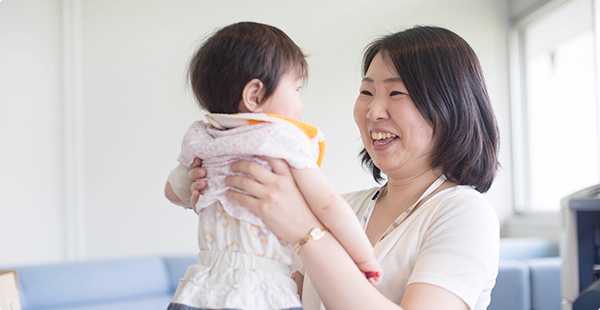
Systems and Environments that Support Life Events - Businesses and Universities
Before and after my pregnancy and childbirth, I used many of the university's support systems, such as the teleconferencing system, the academic assistant system, and the use of the break room. Companies may have better systems and environments for such life events for women than universities. When I was a corporate employee, I felt that the generation before me had already paved the way for me. This may be limited to some companies, but there were already female executives and various systems were already in place. In fact, many employees were using each system, and it was easy to gain the understanding of those around me, so it was an environment where it was easy to balance work and personal life. I feel that it is also necessary at the university to raise the awareness of those around me regarding diversity initiatives.
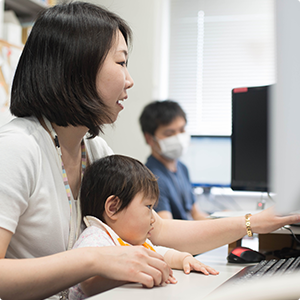
Image of research fields and women - for prospective researchers
I have never felt that being a woman has been an obstacle to my research. I think whether it is a barrier or not depends on how each individual feels. In my field, we often use dangerous reagents and high-pressure gases in our experiments, but when I decided to become a researcher at the age of 21, I had no hesitation. It was my own choice, and I have never regretted it since. Of course, there are risks involved in designing a woman's life, but I still enjoy doing experiments, so much so that concentrating on them is my way of relieving stress. But when I was a corporate employee, there were 200 people in my team, and I was the only woman. There are so few women in this field. Does our field not have a very good image for women?
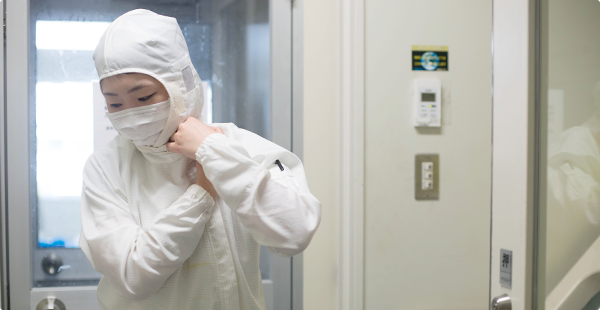
In our case, we wear pure white clean suits with only the eyes showing so as not to bring microscopic debris into the lab, so women who like to dress up may not like us. We also use large vacuum equipment, so there is a lot of heavy lifting involved in maintenance. Maintenance, which involves disassembling and reassembling vacuum equipment, is one of the most enjoyable jobs because you can actually see and learn how the equipment works, but it may not be suitable for women. However, I think it is precisely because of this environment that a woman's perspective can come alive. You don't have to do the same things as everyone else around you, so it's important to find something that only you can do, using your own characteristics. For those who aspire to be researchers, I would like them to be interested in different things without being limited by their image, and to accept challenges without being afraid of taking risks.
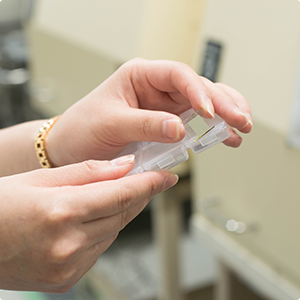
(June, 2017)

-
2017.3 updated
Division of Biological Science
-
2017.3 updated
Division of Biological Science
-
2017.3 updated
Division of Biological Science






